Ford Ute Pick-ups and Bronco 1987-96 Chiltons
|
Ford Pick-Ups & Bronco 1987 - 1996 Chilton Owners Service & Repair Manual Covers covers all US and Canadian models, 2-wheel drive and 4x4, powered by petrol and diesel engine, including: Contents: Chilton repair manuals can save you money on maintenance and repair bills. Step-by-step procedures and illustrations guide you through every job, from basic maintenance and troubleshooting, to complete teardown & rebuild.
|
The Bronco ended up being launched in 1966 as a rival into the small four-wheel-drive lightweight SUVs that included the Jeep CJ-5 and worldwide Harvester Scout, also it is built on its own system. A major redesign in 1978 moved the Bronco to a bigger dimensions, using a shortened Ford F-Series truck framework to take on the similarly adjusted Chevy K5 Blazer, as well as the Dodge Ramcharger.
The full size Broncos and also the successor journey are created at Ford's Michigan Truck Plant in Wayne, Michigan.
In 1986, the body and drivetrain regarding the fullsize Bronco changed, as it was nevertheless on the basis of the F-Series. The latest aero system style shown a bigger redesign of several Ford vehicles for new model seasons. By 1988, all Broncos are on the market with electronic gasoline shot (first introduced in 1984 using the 302). In 1990 (1991 model 12 months), a 25th Silver Anniversary version was offered featuring unique badges, Currant Red paint and a gray and red leather indoor. A Nite version, like that regarding F-Series, was also offered by 1990 through 1992. All Broncos had been built at Michigan Truck Plant in Wayne, Michigan for a passing fancy line as F-150.
The 5-speed M5OD-R2 transmission ended up being added as an alternative for 300 cu in (4.9 L) and 302 cu in (4.95 L) driven Broncos for 1987. 1988-89 351W vehicles gotten a C6 transmission. In 1989 (1990 design year), the digitally controlled E4OD automated overdrive emerged standard on the 351W, and 300. The AOD was mated with all the 302 cu in (4.95 L) from 1986 through 1990. In 1990, all motors obtained the E4OD for 1991 brands.
A V8 motor and automatic transmission had been standard in Eddie Bauer, Nite, and Silver Anniversary vehicles. In order to offering a rival for Chevrolet's four-door Suburban, a four-door conversion associated with the F-series team taxi by Michigan-based Centurion cars is supplied through Ford dealerships. Centurion would focus on a Crew Cab pickup, by which they reduced the wheelbase to 140 inches (3,600 mm) and used a Bronco rear-end. Early systems used fibreglass rear areas of the body but later on we were holding alternatively created from steel. The Centurion Classic, because it ended up being labeled as, continued to be provided before Bronco's demise.
The Bronco, along with the F-Series, ended up being updated for 1992. The new Bronco had been redesigned with security in your mind, integrating front crumple areas, rear shoulder seat belts, a 3rd braking system light embedded in detachable top, and 1994, driver-side airbags. Because of the taillight and shoulder belts becoming protection equipment integrated into the most notable, the very best had been no longer legally detachable (though it was however literally feasible) and all sorts of literary works in the owners guides which had previously explained how exactly to remove the top is eliminated. Torx "tamper verification" bolts, which needed a special appliance, were utilized rather than standard hex head bolts to secure the top positioned, though ratchet units remained suitable for top removal.
Cosmetic external and interior changes included a sweeping forward end and a unique dash. Maroon and blue leather chairs are initially offered in 1991 (1992 design season) through the end of manufacturing. Energy mirrors are once more provided from 1991 and from 1995 the Bronco became the first car to add change signal lights within the mirrors. All 1994--1996 Eddie Bauers have an overhead system. Some 1994--1996 XLTs or Eddie Bauers have lighted sunshine visors and a dimming rear-view mirror.
From 1995-1996, Eddie Bauer models have actually a ventilated front bumper. In 1996, XLTs gotten the vented front side bumper aswell.
Two-Tone Bronco
1994-96 monochrome vehicles tend to be XLT athletics models available in black colored, purple, and white. In 1991, Ford offered a 1992 Nite edition bronco with an all black outside and grey interior.
Another minimal version shade offered regarding the mid-1990s XLTs had been a two-tone light teal green and white outdoor with a charcoal gray internal. Just about 600 of this teal and white two-tone had been produced each year.
The 302 engine obtained Mass ventilation (MAF) sensor system in 1993 (MY 1994). The 351 then followed with MAF in 1994 (MY 1995) in Ca. 351s in the remaining nation gotten MAF in 1995 (MY 1996) alongside OBD2 on both the 302 and 351. 1994--1995 351 blocks become roller lifter ready, and 302 and 351 1996 design season motors were roller blocks.
The Ford F-Series is a few full-size pickups from Ford that has been marketed continually since 1948. Typically the most popular variant for the F-Series may be the F-150. It was the best-selling car in the us the past 32 ages, and the best-selling pickup for 43 ages, as well as the best-selling car in Canada, within the tenth generation associated with F-series, the F-250 and F-350 altered human body style in 1998 and joined the Super responsibility show.
During post-World War II era, small Canadian villages had accessibility either a Ford supplier or a Lincoln-Mercury-Meteor dealership, not both; a Mercury-badged variation is sold at Lincoln-Mercury-Meteor dealers truth be told there from 1946 to 1968. Except that the grilles, trim, and badging, these pickups tend to be exactly the same as their particular Ford counterparts.
At the time of 2015, the Ford F-150 comes in the us, Canada, Mexico, most Caribbean nations (except Trinidad and Tobago, Saint Kitts and Nevis and Cuba), Suriname, Ecuador, Peru, Chile, the center East, Iceland, Nigeria, the Dutch territories of Aruba, Curaao, Saint Maarten as well as the Uk international area of Cayman Islands whilst the SVT Raptor is sold in the us, Canada, Mexico, the center East, Ecuador, Chile and Peru. Both are available in LHD just. In Mexico, the F-150 is known as the "Ford Lobo", whilst F-150 SVT Raptor is named the "Ford Lobo Raptor".
The eighth generation associated with the Ford F-Series was a type of trucks and medium-duty commercial trucks generated by Ford from 1986 to 1991. Even though the 1980 framework was carried over to this new design, the 1987 design is additional streamlined, and repair products are made easier. Inside, the inner was given a minor redesign. Backside antilock brake system are now standard, the first truck to boast this. The very first time, all designs were produced with Styleside beds; the Flareside sleep is discontinued with the exception of only a few very early 1987 products utilizing leftover 1986 beds with newer circular fenders. This will be also the last generation are all systems were built with a 4 to 5 speed manual transmission.
The products is:
F-150: 1/2 ton (6,250 lb GVWR max)
F-250 (framework taxi design just): 3/4 great deal (8,800 lb GVWR max)
F-350 (chassis cab design just): 1 great deal (11,000 lb GVWR max)
The F-Super task (due to the fact fender emblems reported) products appeared from 1987 to 1997. They certainly were essentially F-450s built as an "incomplete automobile" (chassis cab) because there was no bed set up and an aftermarket bed (certain to its future utilize) had been included after the truck's preliminary create time. They included double gasoline tanks with a dash-mounted toggle switch to switch between each tank when using only the one gas gauge. It came with a PTO (Power Take-Off) familiar with power attachments (like winches or a dump bed) from transmission. They were ranked at over 15,000 pound (6,800 kg) GVWR (Gross automobile body weight Rating). They was included with either the standard 7.5 L (460 CID) gasoline V8 or the recommended 7.3 L (444 CID) diesel V8. All tires had been 10-lug with DRW (Dual back Wheels). Also, the parking brake was attached to the end of this transmission. This model should not be mistaken for the subsequent "Super responsibility" commercial line of vehicles you start with the 1999 model year.
In a move to further upgrade the F-Series engine lineup, the 4.9 L inline-6 was changed into supply shot for 1987. A-year later on, Ford became the first pickup manufacturer to sell a non-carbureted system lineup as 5.0 L V8 and 5.8 L V8 and 7.5 L V8 additionally attained gas injection. For 1988, the diesel V8 from Global (Navistar) had been enlarged to from 420 to 444 cubic ins; this allowed for a rise to 180 hp (130 kW). and 365 ft*lbf (495 N*m). of torque.
Even though the dated 3-speed manual transmission is stopped, much of the rest of the transmission lineup held more than through the 1980-1986 trucks. In 1988 the five speeds ZF S5-42 changed the Borg-Warner T19 in F-250 and F-350 models. For the F-150, even though the heavier-duty Borg-Warner T18 4-speed handbook stayed readily available, the Mazda-built M5OD 5-speed handbook had been added to the design lineup.
Four-wheel-drive modifications included the connection of automatic locking hubs when it comes to F-150 in 1989. Products aided by the 5.0L V8 in addition had an option of an "Touch Drive" electronic transfer circumstances.
Beginning in 1979 (to 1996), Ford offered a four-wheel-drive swing supply separate front side suspension system labeled as Twin Traction Beam, or TTB. Centered on their I-beam suspension system from mid '60s, Ford installed a Dana 44 differential when you look at the driver-side (front) axle beam and transmitted torque into passenger-side wheel with a double U-jointed axleshaft. Distance hands and coil springs were still applied to the F-150's, although the four-wheel-drive F-250s and F-350s got leaf springs. The F-250s got TTB Dana 50 axles and F-350s got a good axle Dana 60.
300 Six 1987-1989 300 cu in (4,916 cc) I6 165 hp (123 kW) 275 lb*ft (373 N*m) EFI
5.0 Windsor 1987-1989 302 cu in (4,949 cc) V8 185 hp (138 kW) 270 lb*ft (370 N*m) EFI
5.8 Windsor 1987 351 cu in (5,752 cc) V8 210 hp (157 kW) 305 lb*ft (414 N*m) 4-bbl carburetor
5.8 Windsor 1988-1991 351 cu in (5,752 cc) V8 210 hp (157 kW) 315 lb*ft (427 N*m) EFI
460 V8 1987 460 cu in (7,538 cc) V8 225 hp (168 kW) 362 lb*ft (491 N*m) 4-bbl carburetor
460 V8 1988-1989 460 cu in (7,538 cc) V8 225 hp (168 kW) 390 lb*ft (530 N*m) EFI
International 6.9L IDI V8 1987 420 cu in (6,883 cc) Diesel V8 170 hp (127 kW) 315 lb*ft (427 N*m) Indirect gas injections
Global 7.3L IDI V8 1988-1989 444 cu in (7,276 cc) Diesel V8 180 hp (134 kW) 345 lb*ft (468 N*m) Indirect fuel injection
The 300 cu in (4.9 L) six is included the F-series in 1965. It had been essentially a 240 cu in (3.9 L) with a longer stroke. The two machines were nearly identical; the differences are in the rotating installation and combustion chamber sizes in head (although the heads tend to be compatible). It produced 170 hp (127 kW) (gross). The 300 became the base F-series engine in 1978 at 114 hp (85 kW) (hp amounts changes as a result of Ford switching to web power ratings in 1971). Power outputs were risen to about 122 hp (91 kW) during very early 1980s, before gas shot was introduced. This became the main engine for the line, eclipsing the 240. Unlike the Falcon engine, it showcased split intake and exhaust manifolds, which may easily be replaced with aftermarket manifolds providing the promise of a lot more energy, through the installation of bigger carburetors and a greater streaming fatigue system.
In addition during belated sixties and very early 70s, the 300 had been utilized in bigger automobiles like dump vehicles, many weighing into the 15,000--20,000 lb (7,000--9,000 kg) number. These 300s are loaded with a greater circulation HD (heavy weight) exhaust manifold, since the machines were likely to be continuously employed in the 3000--4000 rpm range. These uncommon, yet effective manifolds have a much greater fatigue circulation rates because many of these engines would invest time at 3000 RPMs or more. Because of the simple and high-flowing design, enthusiasts often seek these manifolds out because of the convenience where they allow turbochargers to-be retrofitted on motor.
Engine sizes were converted to metric for 1983, causing the 300 to become the "4.9". Fuel injections and other alterations in 1987 pressed output up to 145 hp (108 kW) with 8.8:1 compression. This engine was slowly phased out, closing manufacturing in 1996, and was changed because of the Essex V6 within the F-series vehicles making use of their 1997 redesign. But is renowned for the durability, reduced end torque, and simple service. The 300 4.9 was included with the Ford C6, E4OD, AOD, ZF S5-42 and S5-47 transmissions, plus the Mazda built M5OD 5-speed manual transmission, and the Borg-Warner T18, Tremec RTS, and New techniques NP435 4-speed guide transmissions. The 4.9-liter 6-cylinder is integrated the Cleveland, Ohio system plant.
This engine can also be used by Stewart and Stevenson in the MA Baggage Tow Tractor (pdf), and Harlan in their standard tow tractors , also a multitude of various other pieces of equipment, such as for instance ski lifts, power generators, wood chippers, tractors, and, until they converted to diesel motors, more UPS trucks. Many UPS trucks still utilize the 300 to this day.
In fixed solution (generators and pumps) fueled with LPG or natural gas, this system is known as the CSG-649.
By 1967 the Ford GT40 MKII and GT40 MKIV have dominated the Le Mans 24Hr Race for two consecutive many years, using various versions of this Ford huge block system. So as to reduce steadily the high speeds in 1968 (some tell equalize your competition), the organisers for this competition capped the engine capability. Ford consequently returned to the MKI GT40 (originally using the Windsor 289ci) but have today increasing their ability to meet up with the new procedures. Since Ford had ruled that the GT40 engines must-have an immediate website link returning to their manufacturing cars, the 302ci had been adopted in domestic production.
So in 1968 the little block Ford was stroked to 3.0 in (76.2 mm), offering a complete displacement of 302 CI (4,942 cc). The connecting rods had been reduced to allow the application of equivalent pistons while the 289. They changed the 289 at the beginning of the 1968 model seasons.
The most common type of this motor used a two-barrel carburetor, at first with 9.5:1 compression. It have hydraulic lifters and valves of 1.773 in (45 mm) (consumption) and 1.442 in (36.6 mm) (exhaust), and is ranked (SAE gross) at 220 hp (164 kW) at 4,600 rpm and 300 lb*ft (407 N*m) at 2,600 rpm. Optional is a four-barrel version rated at 250 hp (186 kW) at 4,800 rpm.
For 1968 best, an unique high-performance version of the 302 was provided for Shelby GT350. Its main features included an angled, high-rise aluminum or metal consumption manifold, a more substantial Holley four-barrel carburetor, and bigger valves of 1.875 in (47.6 mm) consumption and 1.6 in (41 mm) exhaust. They had a longer-duration camshaft, still with hydraulic lifters. The block is a high-strength, greater nickel contents design made in Mexico. "Hecho en Mexico" casting scars exist in lifter valley, as well as its main power is the appearance of much larger and stronger two-bolt main bearing hats regarding the engine's bottom end. The heads had special close tolerance pushrod holes to guide the pushrods without railway rocker hands or stamped metal guidelines dishes. The burning chambers also featured an inferior quench build for an increased compression ratio and better flow faculties. In addition, highest circulation throw exhaust manifolds like those regarding 289 Hi-Po K-code motor more improved production. Heavy-duty connecting rods with high strength bolts and a nodular iron crankshaft are furthermore one of them bundle. Ranked power (SAE gross) ended up being determined at 315 hp (235 kW) at 6,000 rpm and 333 lb*ft (451 N*m) at 3,800 rpm. The package, which are priced at 2 (USD) like another equipment, wasn't popular and failed to return for 1969. This motor wasn't a factory system. Instead, like all Shelby Mustang motors, it had been modified by Shelby United states within their capability as an automobile upfitter. This unique engine are well documented within the Ford factory motor restoration manual for 1968 Mustangs and Fairlanes. This motor block is considered the strongest production 302 block except that the Boss 302 together with Trans Am 302. The heavy weight Mexican 302 block was produced for a number of more many years, as well as showed up on Ford vehicles and vans through the late 1970s and early 1980s.
Emission laws saw a progressive decrease in compression proportion for 302 two-barrel, to 9.0:1 in 1972, reducing SAE gross horse power to 210 hp (157 kW). In that year U.S. automakers began to estimate horsepower in SAE web ranks; the 302 two-barrel carried a net rating of 140 hp (104 kW). By 1975 its energy would drop as low as 122 hp (91 kW). Not until gasoline shot began to can be found in the 1980s would net power ratings rise above 210 hp (157 kW).
Throttle body fuel injections first made an appearance for 302 on Lincoln Continental in 1980, and was made standard on all programs in 1983 except handbook transmission furnished Mustangs, Mercury Capris (equipped first with two-barrel (1982), after that later on 4-barrel carburetor (1983--85)), as well as F-series vehicles. The block had been fitted with revised, taller lifter bosses to just accept roller lifters, and a steel camshaft in 1985, and electronic sequential fuel injections ended up being launched in 1986. While sequential injection was used on the Mustang starting in 1986, a great many other cars, including trucks, proceeded to use a batch fire fuel injection system. The speed-density formulated EFI methods used a sizable, two-piece, throw aluminum manifold. It was installed on all machines through 1988, and after that seasons it absolutely was changed by a mass-air means measuring program, with the same manifold. The MAF program continued, with lesser revisions, until the your retirement of this motor in 2001. Ford supplied a performance head that was a stock role on 1993 - 1995 Mustang Cobra designs and pre- 1997-1/2 Ford Explorers and Mercury Mountaineers designed with the 5.0 L system known as the GT-40 head (casting id F3ZE-AA). In mid-1997, the Explorer and Mountaineer 5.0 L minds were revised and rebranded GT40P. The GT40P heads, unlike the GT40 heads, have an extremely well-developed interface shape/design which yielded ~200 cfm from the intake side and ~140 cfm regarding exhaust side without increasing the size of the harbors whatsoever from standard E7TE castings, and without increasing the exhaust device size. They even had small 59 - 61 cc combustion chambers for additional compression, therefore the combustion chamber form ended up being modified to put the spark-plug idea near the center associated with the chamber for a far more even shed. These GT40P minds are believed by many lovers to-be extremely efficient.
The 302 has also been offered for aquatic programs in both standard and reverse rotation setups.
When you look at the 1980s the 302 became additionally known as the 5.0 Liter, although its metric displacement are 4,942 cc. It is speculated that Ford used the "5.0" moniker to distinguish the 302 from their 300 cu. in. inline Six, that has been known as the 4.9. Despite its advertised displacement, Car and Driver known the 302 as a 4.9 liter system, even though the regular 302 Ford system enthusiast always referred to they as a "5-Oh, 5 Liter, or 302".
The 302 remained a mainstay of various Ford vehicles through the belated 90's, although it was increasingly changed because of the 4.6 L Ford Modular motor starting in the early 1990s. The final 302 engine is produced for set up in a production automobile was at Cleveland system Plant # 1 in December 2000, as part of a build ahead to provide Ford of Australian Continent, which setup their particular final these types of system in a fresh car in August 2002. The 302 remains readily available as a whole crate engine from Ford rushing Efficiency section.
5.6
In 2001, Ford Australia additionally built some stroked, 5.6 L (5,605 cc, 342 cu in) Windsors with reworked GT40P heads (featuring bigger valves), an original eight trumpet inlet manifold, long throw crank, H beam rods and roller rockers. They created 335 hp (250 kW) at 5,250 rpm and 369 lb*ft (500 N*m) at 4,250 rpm. The 5.6 litres of displacement ended up being achieved by lengthening the swing from 76.2 mm (3.0 in) to 86.4 mm (3.4 in).
Ford F-250 Review - Edmunds.com
Read Ford F-250 reviews & specs, view Ford F-250 pictures & videos, and get Ford F-250 prices & buying advice for both new & used models here.
Ford F-250 Clearance | Ford F-250 Deals | Car.com
Whopping Discount On 2015 Ford! Get a Ford Internet Price Now . Huge Markdowns on Ford F-250 this Month! Get the Lowest Ford Prices — Check Dealers Near You.
Ford F-250 Review - Motor Trend
Read our latest Ford F-250 review. Research the new Ford F250 pricing, specs, and photos at Motor Trend.
2016 Ford Super Duty F-250 XLT | See All The Super Duty F ...
View the 2016 Ford Super Duty F-250 XLT Vehicle Highlights.
Ford Super Duty - Wikipedia, the free encyclopedia
The Ford Super Duty is a line of trucks (over 8,500 lb (3,900 kg) GVWR) that were launched by Ford in early 1998 for the 1999 model year. The F-250 to F-550 Super ...
Ford F-Series - Wikipedia, the free encyclopedia
The Ford F-Series is a series of full-size pickup trucks from Ford which has been sold continuously since 1948. The most popular variant of the F-Series is the F-150.
Ford F-250 Super Duty Review - Research New & Used Ford F ...
Read Ford F-250 Super Duty reviews & specs, view Ford F-250 Super Duty pictures & videos, and get Ford F-250 Super Duty prices & buying advice for both new & used ...
Ford Super Duty - Official Site
The 2016 Ford Super Duty Truck - Take a look at the powerful Super Duty pickup. View interior & exterior photos, specifications, trim levels & build & price your very ...
Ford Pick-ups and Bronco Petrol and Diesel 1986 - 1996 F100 F150 F250 F350 Chiltons repair manual NEW 1987 1988 1989 1990 1991 1992 1993 1994 1995 1996 NEW
.

 0 Items (Empty)
0 Items (Empty)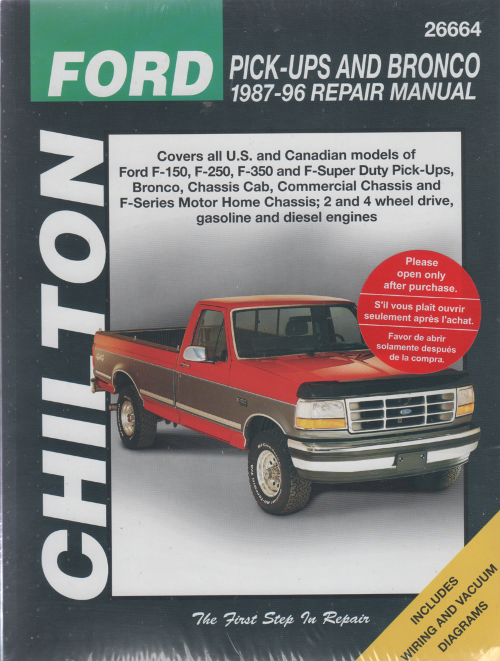


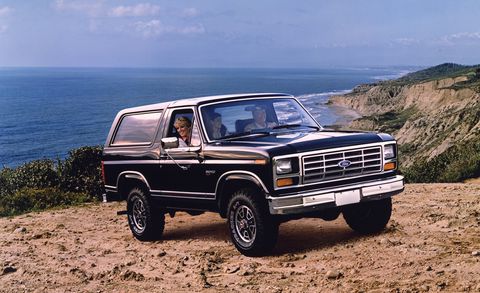
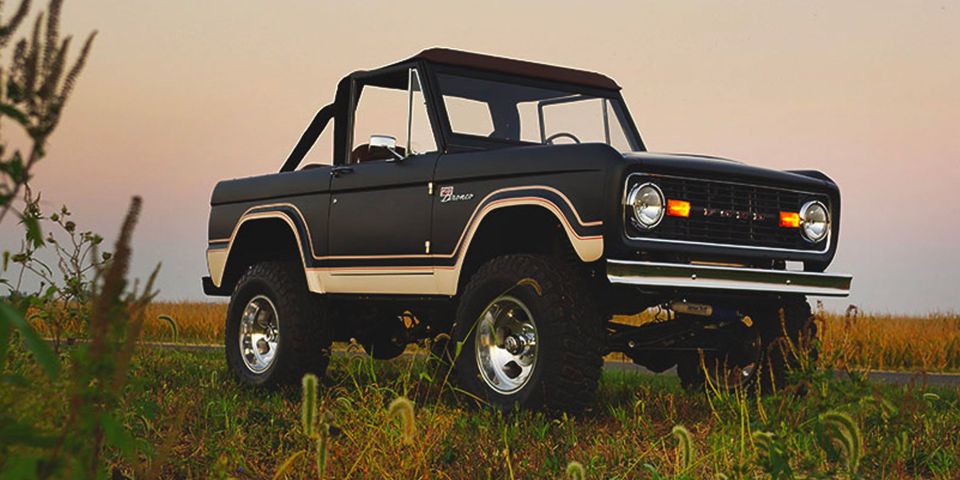
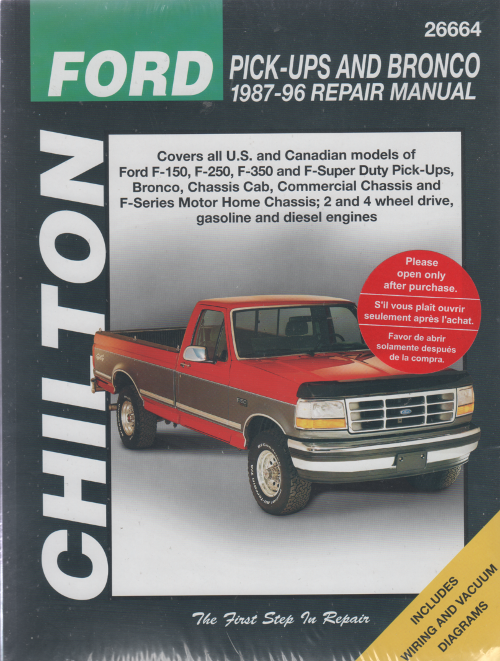
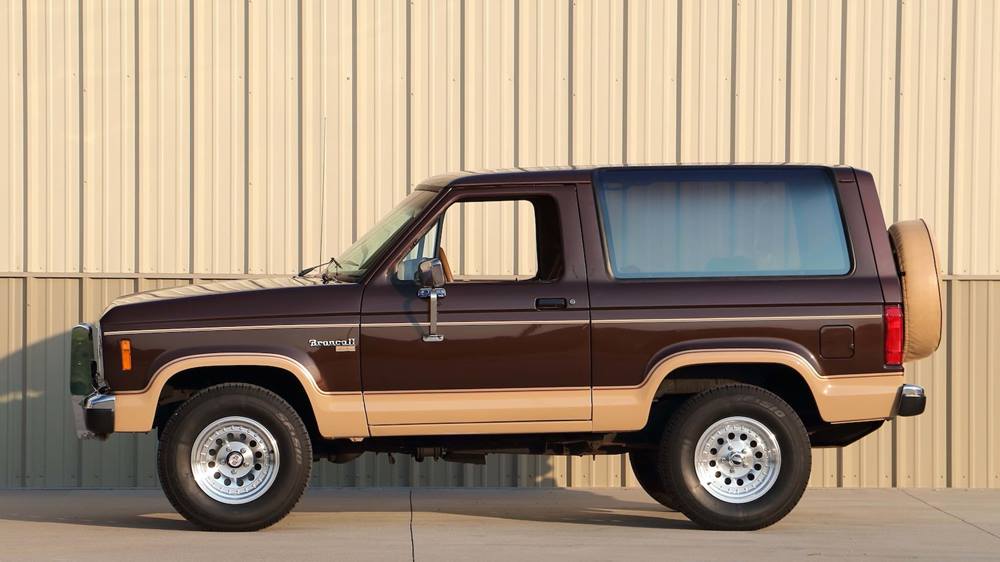 >
>